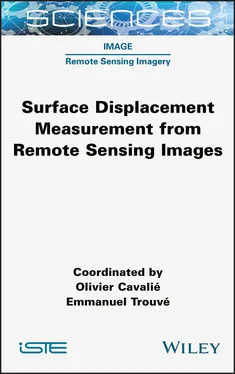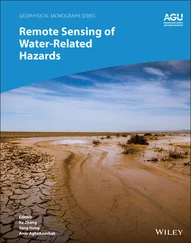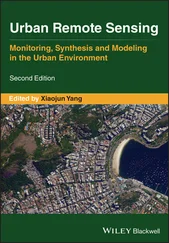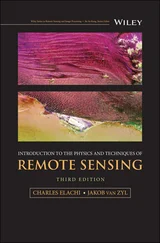1 Cover
2 Title Page SCIENCES Image , Field Director – Laure Blanc-Feraud Remote Sensing Imagery , Subject Head – Emmanuel Trouvé and Avik Bhattacharya
3 Copyright First published 2022 in Great Britain and the United States by ISTE Ltd and John Wiley & Sons, Inc. Apart from any fair dealing for the purposes of research or private study, or criticism or review, as permitted under the Copyright, Designs and Patents Act 1988, this publication may only be reproduced, stored or transmitted, in any form or by any means, with the prior permission in writing of the publishers, or in the case of reprographic reproduction in accordance with the terms and licenses issued by the CLA. Enquiries concerning reproduction outside these terms should be sent to the publishers at the undermentioned address: ISTE Ltd 27-37 St George’s Road London SW19 4EU UK www.iste.co.uk John Wiley & Sons, Inc. 111 River Street Hoboken, NJ 07030 USA www.wiley.com © ISTE Ltd 2022 The rights of Olivier Cavalié and Emmanuel Trouvé to be identified as the authors of this work have been asserted by them in accordance with the Copyright, Designs and Patents Act 1988. Any opinions, findings, and conclusions or recommendations expressed in this material are those of the author(s), contributor(s) or editor(s) and do not necessarily reflect the views of ISTE Group. Library of Congress Control Number: 2022934057 British Library Cataloguing-in-Publication Data A CIP record for this book is available from the British Library ISBN 978-1-78945-083-5 ERC code: PE6 Computer Science and Informatics PE6_11 Machine learning, statistical data processing and applications using signal processing (e.g. speech, image, video) PE10 Earth System Science PE10_14 Earth observations from space/remote sensing
4 Preface
5 PART 1: Theory, Principles and Methodology
6 1 Relevant Past, On-going and Future Space Missions
1.1. Some key parameters for space missions 1.2. Past and on-going SAR missions 1.3. Future SAR missions 1.4. Optical imaging missions 1.5. Conclusion 1.6. Acknowledgments 1.7. References
7 2 Image Matching and Optical Sensors 2.1. Introduction, definition and applications 2.2. Template matching 2.3. Handling “large” deformations 2.4. Discrete nature of the image and sub-pixel matching 2.5. Optical imaging sensors 2.6. Acknowledgments 2.7. References
8 3 SAR Offset Tracking 3.1. Basics of SAR imaging 3.2. SAR offset tracking 3.3. Acknowledgments 3.4. References
9 4 SAR Interferometry: Principles and Processing 4.1. Introduction 4.2. Principle and limits of SAR interferometry 4.3. Atmospheric corrections 4.4. InSAR processing chains 4.5. Conclusion 4.6. Acknowledgments 4.7. References
10 5 Advanced Methods for Time-series InSAR 5.1. Introduction 5.2. Background of time-series InSAR analysis 5.3. A review 5.4. The SBAS technique 5.5. The PSDS technique 5.6. Acknowledgments 5.7. References
11 6 The Interferometric Phase: Unwrapping and Closure Phase 6.1. Introduction 6.2. Phase unwrapping algorithms and limitation of phase unwrapping errors 6.3. The (re)discovery of closure phases and their implications for SAR interferometry 6.4. Acknowledgments 6.5. References
12 PART 2: Applications for Surface Displacements
13 7 Remote Sensing of the Earthquake Deformation Cycle 7.1. Introduction 7.2. What have we learned about faults from nearly three decades of tectonic InSAR? 7.3. Investigating earthquake surface ruptures with optical image correlation 7.4. Conclusion 7.5. Acknowledgments 7.6. References
14 8 Volcanology: The Crucial Contribution of Surface Displacement Measurements from Space for Understanding and Monitoring Volcanoes 8.1. Introduction 8.2. Origin of surface displacement and topographic changes in a volcano 8.3. Techniques used to measure displacements and topographic changes in volcanoes 8.4. Main limitations of measurements obtained by remote sensing 8.5. Main contributions of spatial geodesy for monitoring and studying volcanoes 8.6. Recent progress 8.7. Volcanic crisis management: the contribution of displacement measurements obtained using spatial imagery 8.8. Conclusion 8.9. Acknowledgments 8.10. References
15 9 Anthropogenic Activity: Monitoring Surface-Motion Consequences of Human Activities with Spaceborne InSAR 9.1. Introduction 9.2. Characteristics of subsidence/uplift phenomena associated with human activity 9.3. Application examples: urban underground activities 9.4. Applications in mineral resources extractive activities 9.5. Conclusion 9.6. Acknowledgments 9.7. References
16 10 Measuring Kinematics of Slow-Moving Landslides from Satellite Images 10.1. Introduction 10.2. Image correlation applied to satellite optical images 10.3. Offset tracking of SAR images applied to landslides 10.4. InSAR for landslide studies 10.5. Conclusion 10.6. References
17 11 Remote Sensing of Glacier Motion 11.1. Introduction 11.2. What is glacier motion? 11.3. Measuring glacier displacement from satellite data 11.4. What can we learn from glacier displacement? 11.5. Perspectives and future directions 11.6. Acknowledgments 11.7. References
18 12 New Applications of Spaceborne Optical Image Cross-Correlation: Digital Elevation Models of Volcanic Clouds and Shallow Bathymetry from Space 12.1. Introduction 12.2. Digital elevation models of volcanic ash clouds 12.3. Shallow bathymetry: measuring wave characteristics from space 12.4. Concluding remarks 12.5. Acknowledgments 12.6. References
19 List of Authors
20 Index
21 End User License Agreement
1 Chapter 1 Table 1.1. Main orbital parameters for some sun-synchronous SAR missions Table 1.2. Main orbital parameters for some sun-synchronous optical missions Table 1.3. Allocated frequencies and bandwidths for active SAR civil sensors in ... Table 1.4. Examples of satellite missions and B/H ratios Table 1.5. Description of spectral bands Table 1.6. Past mission characteristics and parameters Table 1.7. Past mission instrument characteristics Table 1.8. Mission characteristics and parameters (1/2) Table 1.9. Mission characteristics and parameters (2/2) Table 1.10. Instrument characteristics (1/2) Table 1.11. Instrument characteristics (2/2) Table 1.12. Future mission characteristics and parameters Table 1.13. Future instrument characteristics
2 Chapter 4Table 4.1. Main DInSAR software packages
3 Chapter 5Table 5.1. Overview of PS and PSDS time-series software packages
4 Chapter 7Table 7.1. Summary of pros and cons of InSAR and optical correlation
5 Chapter 8Table 8.1. Techniques for measuring surface displacement and topographic changes...
6 Chapter 11Table 11.1. Summary of pros | and cons | of the different methods. For a color v...
1 Chapter 1 Figure 1.1. Relevant SAR missions and associated frequency bands (future mission...
2 Chapter 2 Figure 2.1. A toy example of the basic 2D template matching. A windowV centered ... Figure 2.2. In the noisy data region, two geometric deformations are shown as a ... Figure 2.3. The impact of the regularization term in equation [2.22] on the solu... Figure 2.4. Sensor orientation in 3D space. ( X, Y, Z ) wand ( X, Y, Z ) care the re... Figure 2.5. Epipolar lineep as a projection of a bundleBp via the epipolar plane...Figure 2.6. An image pair in the original geometry (bottom) and rectified to the...Figure 2.7. The effect of unmodeled sensor errors on image matching. The left im...
3 Chapter 3Figure 3.1. SAR imaging geometry compared to the imaging geometry of a simple op...Figure 3.2. Look-and-flight directions (black and red arrows) for SAR acquisitio...Figure 3.3. Sampling of the topography in slant-range coordinates. The x-axis in...Figure 3.4. (a) Great Aletsch Glacier (Switzerland) imaged in the slant-range ge...Figure 3.5. The scattering amplitude and phase of a coherent target is independe...Figure 3.6. Radar image of a glacier (left side) flowing around a rock ridge (ri...Figure 3.7. The slant-range spectrum of the single-look-complex amplitude image ...Figure 3.8. Top row: phase φ and intensity I (color; brightness) of reference an...Figure 3.9. Top row: linearly scaled radar intensity of reference and search are...Figure 3.10. Top row: Great Aletsch Glacier intensity image (left) and velocity ...Figure 3.11. (a) The temporal average of 10 SAR images (TerraSAR-X, ©DLR 2021) s...Figure 3.12. Geometric model of 3D displacement and the displacement in the rang...
Читать дальше












